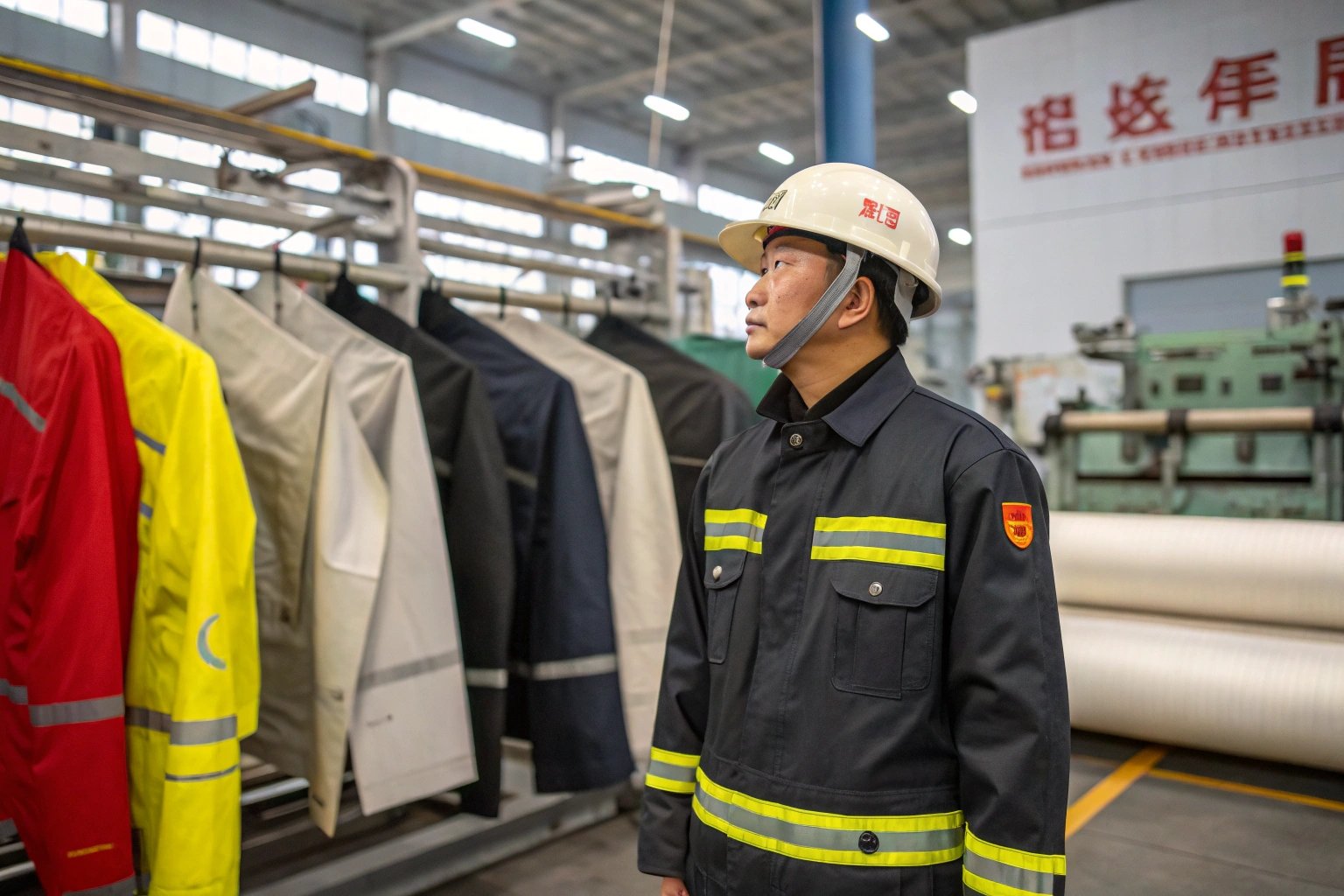In high-risk industries like oil & gas, firefighting, or electric utility, a single second of flame exposure can be fatal. That’s why workwear buyers are increasingly looking for reliable flame-resistant (FR) fabrics, especially those made with aramid blends. But sourcing the right ones isn’t just about safety—it’s about balancing performance, durability, certification, and price.
You can find high-quality aramid blend fabrics for FR workwear from specialized textile manufacturers who offer certified products, in-stock yardage, and technical support for garment production.
As the owner of a textile export company based in Keqiao, I’ve helped clients worldwide source aramid blend fabrics for safety uniforms, protective jackets, and even anti-static industrial garments. This guide will walk you through where to find them—and what to look for before you buy.
What Are Aramid Blends and Why Are They Flame-Resistant?
Aramid fibers—like Nomex®, Kevlar®, and meta-aramids—are heat-resistant synthetic fibers that don't melt, drip, or ignite easily. When blended with other fibers, they create fabrics that are lighter, more breathable, and better suited for long-hour workwear.
Aramid blends provide permanent, built-in flame resistance, unlike treated cottons, which lose protection after repeated washing.
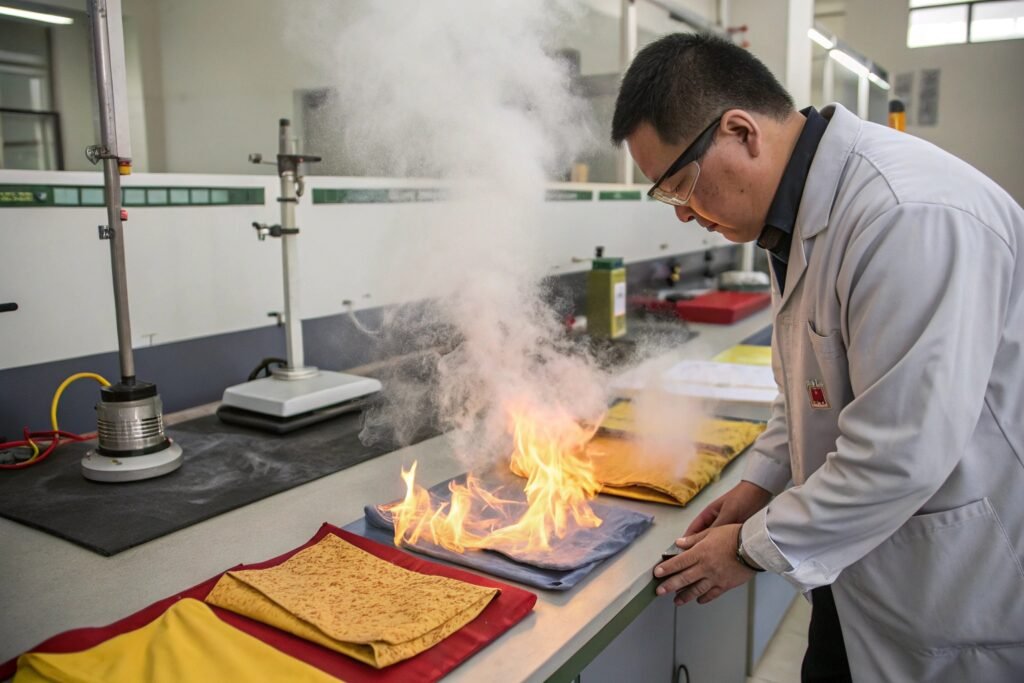
What’s in a Typical Aramid Blend?
Common aramid blends include:
- 93% Meta-aramid / 5% Para-aramid / 2% Antistatic (e.g., Nomex IIIA alternative)
- 60% Modacrylic / 40% Cotton / Aramid coating
- 50% Aramid / 50% FR Rayon for softer handfeel
These blends retain heat resistance while improving comfort. Some fabrics also include carbon fibers to dissipate electrostatic charge in ATEX zones or refineries.
Our factory manufactures aramid-cotton and aramid-polyester blends using branded and non-branded yarns. We also conduct internal LOI (Limiting Oxygen Index) and vertical flame testing.
Why Choose Blends Over 100% Aramid?
While 100% aramid fabrics offer superior thermal stability, they’re often heavy, stiff, and expensive. Blends provide:
| Feature | 100% Aramid | Aramid Blend |
|---|---|---|
| Heat Resistance | Excellent | Very Good |
| Comfort | Moderate | Higher |
| Breathability | Low | Better |
| Price | High | Moderate to Low |
Aramid blends are more cost-effective for large-volume uniforms used in sectors like logistics, welding, or offshore maintenance.
Where Are the Best Global Sources for Aramid Blends?
When sourcing FR fabrics, it’s critical to vet suppliers not just by price, but by technical reliability and compliance. Here’s where international buyers typically look for quality aramid blends.
The top sources for aramid blend FR fabrics include China, Western Europe, and the USA, each offering different pricing and certification advantages.
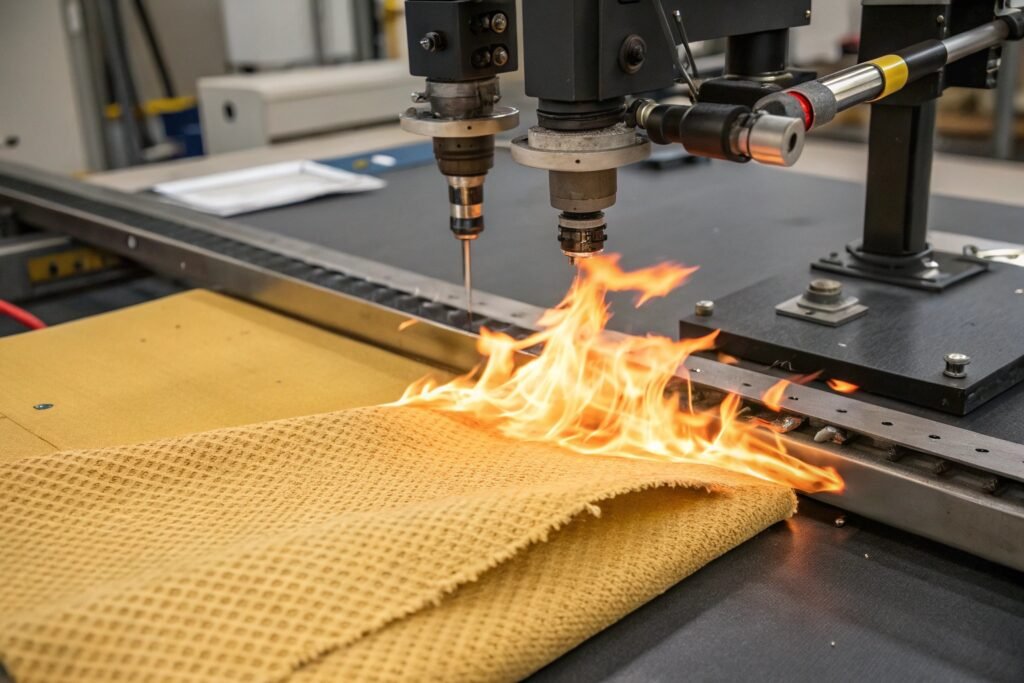
What Does China Offer?
China—especially Keqiao, Zhejiang—has become a major hub for FR fabrics, including aramid blends. We manufacture:
- In-stock aramid-cotton blends with EN11612 & NFPA 2112 compliance
- Custom blends with anti-static, acid-resistant, and water-repellent finishes
- Coated and laminated aramid blends for arc flash protection
With in-house testing, scalable production, and faster shipping, Chinese mills like ours can offer 20–40% cost savings compared to Western mills.
We also partner with clients to run third-party tests before shipment—ensuring confidence in large orders.
What About Europe and the U.S.?
Western mills offer highly specialized and branded aramid blends. Examples include:
- DuPont (Nomex®)
- Lenzing FR blends
- Carrington Textiles (UK)
- Milliken (USA)
These suppliers guarantee UL, ASTM F1506, and IEC 61482 certifications, making them ideal for military, aviation, and nuclear sectors. But lead times can stretch to 90+ days and pricing is significantly higher.
If budget allows, some buyers prefer importing branded blends and pairing them with offshore garment production.
How to Verify Fabric Certifications Before Ordering?
Don’t rely on claims—always verify flame-resistance with proper documentation. Trusted suppliers will share lab test reports from accredited bodies or let you conduct your own.
Key certifications for aramid blends include EN ISO 11612, NFPA 2112, ASTM F1506, and IEC 61482.
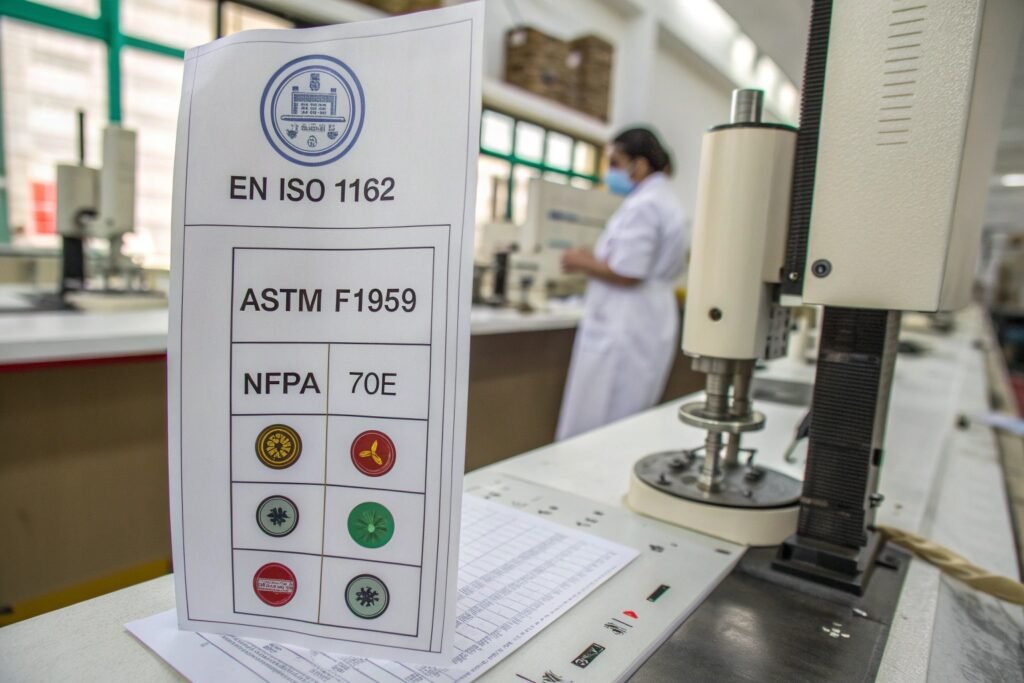
Which Tests Should You Look For?
| Standard | Region | Application |
|---|---|---|
| EN ISO 11612 | EU | Heat & flame protection |
| NFPA 2112 | USA | Industrial flash fire protection |
| ASTM F1959/F1506 | USA | Arc rating and electric utility use |
| ISO 14116 | Global | Flame spread index |
We work with CNAS, SGS, and Intertek to validate fabric performance. If you're unsure, ask the supplier to send sample-tested reports and even run a third-party re-test on your batch.
What Is the ATPV or ARC Rating?
ATPV (Arc Thermal Performance Value) tells you how much energy (cal/cm²) a fabric can block before causing second-degree burns. This is crucial for electric utility applications.
The higher the number, the better. A minimum of 8 cal/cm² is often required by North American brands.
Ask your supplier for ASTM F1959 test results showing the ATPV value or EBT (Energy Breakopen Threshold).
What Services Should a Good Supplier Offer Beyond Fabric?
In flame-resistant clothing, reliability is everything. Sourcing aramid blends from a supplier who offers end-to-end services reduces your risk and speeds up your supply chain.
The best suppliers offer custom blend development, in-house testing, garment prototyping, and logistics coordination for bulk aramid fabric sourcing.
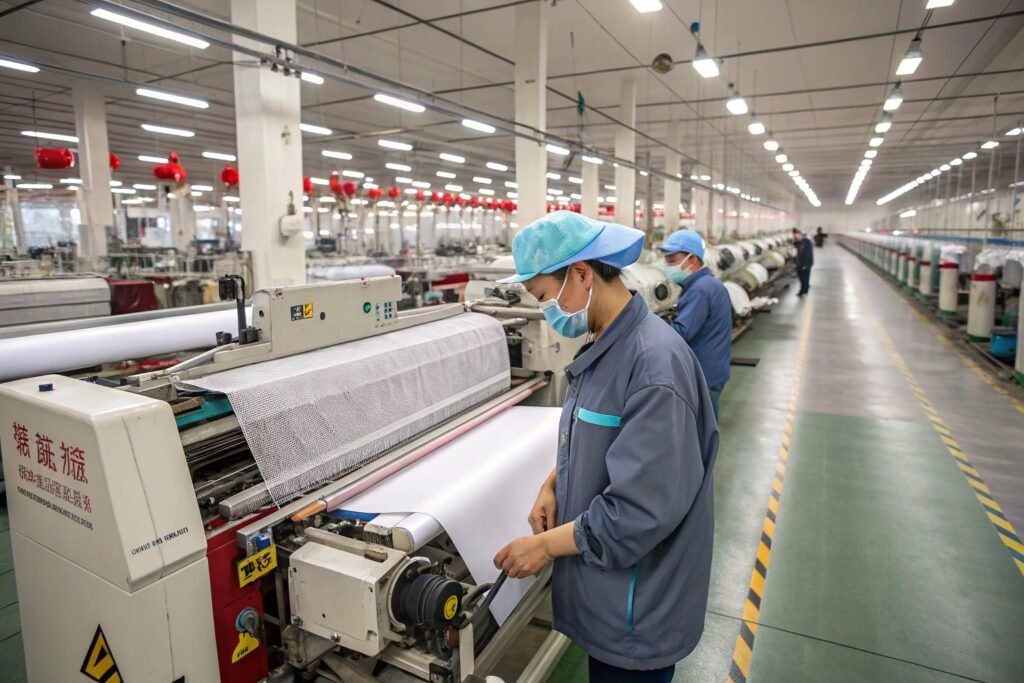
What Value-Added Services Should You Ask For?
At Fumao Fabric, we provide:
- Custom color lab dips with FR compliance
- Lot-based QR code tracking for fabric safety specs
- OEM garment connections for uniforms and jackets
- 24-hour sample delivery and 3-day bulk readiness
- Air and sea freight optimization with our logistics partners
With U.S. tariffs on technical textiles still in play, we also help clients optimize customs codes and explore RCEP or Belt & Road shipping incentives.
How Can You Evaluate a New Supplier?
Start with small-batch testing. Ask for:
- 1–3 meters of fabric for flame/arc testing
- Certificates of origin and CNAS testing
- Video walkthroughs of coating and weaving lines
Good FR suppliers are transparent. We share full factory audit reports and even offer live virtual inspections for clients abroad.
Conclusion
Finding aramid blend fabrics for flame-resistant workwear is no longer limited to a few expensive sources. Today, performance-grade blends are available from trusted mills in China and beyond—if you know what to ask. Certifications, test data, and application-specific performance are non-negotiable. At Fumao, we take pride in helping global buyers source reliable FR solutions backed by testing, logistics, and service. If you're outfitting teams that work in danger zones, make sure your fabric is as strong as your commitment to safety.

